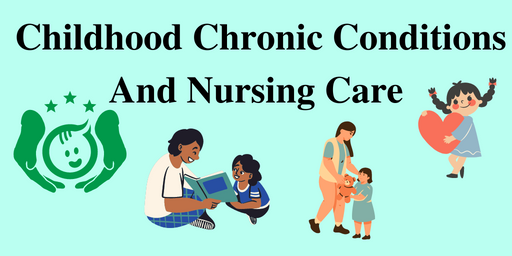The Childhood Chronic Conditions and Nursing Care. Chronic illness in children presents significant challenges not only for the affected individuals but also for their families and healthcare providers.
The Childhood Chronic Conditions And Nursing Care
Understanding the nature of childhood chronic conditions, their prevalence, risk factors, and the research surrounding them is essential for pediatric nurses. This paper will delve into the definitions and characteristics of childhood chronic illnesses, explore prevalence estimates, identify risk factors for health problems, and discuss ongoing research in the field of pediatric chronic conditions.
What Is Childhood Chronic Illness?
Childhood chronic illness lacks a single accepted definition; however, a research consortium has recommended a dual approach that considers both the duration of the condition and its impact on the child’s functioning. According to Perrin et al. (1993), a chronic condition is one that persists for more than three months and impacts the child’s ability to perform daily activities.
Characteristics of Chronic Illness
- Duration: Chronic illnesses are characterized by long-term persistence, which can include recurring acute conditions such as repeated ear infections or conditions that are inherently long-lasting, like diabetes.
- Impact on Functioning: A chronic condition limits the child’s ability to function normally and may require additional medical attention beyond what is expected for their age.
- Associated Morbidities: Recent trends have highlighted the importance of addressing comorbidities associated with chronic conditions, such as obesity and mental health issues.
Understanding these definitions is crucial for pediatric nursing as it guides the care and management strategies tailored to the needs of these children.
Prevalence Estimates for Childhood Chronic Conditions
The prevalence of childhood chronic conditions can vary significantly based on the definition used. Estimates range from less than 5% to more than 30% of the pediatric population.
Statistical Insights
- In 2001, more than 83% of children were reported to have very good or excellent health by their parents. However, about 8% of school-age children had activities limited due to a chronic condition (Federal Interagency Forum on Child and Family Statistics).
- Estimates suggest that as many as 1 in 5 children may have a chronic health condition requiring ongoing medical care.
Implications for Pediatric Nursing
The variability in prevalence highlights the necessity for pediatric nurses to remain vigilant in recognizing and addressing chronic conditions. Understanding the common conditions and their impact on daily life is essential for delivering effective care.
Risk Factors for Health Problems
Several risk factors have been identified that contribute to the prevalence and severity of chronic conditions in children.
Key Risk Factors
- Demographic Differences: Boys are generally found to have more limitations from chronic conditions than girls. Additionally, school-age children (ages 5-17) are twice as likely to have chronic conditions compared to preschoolers.
- Socioeconomic Status: Children from lower-income families tend to experience poorer health outcomes than those from higher-income families. This trend highlights the disparities in healthcare access and resources.
- Racial and Ethnic Disparities: Black and Hispanic children often face greater health challenges compared to their white counterparts. For instance, studies indicate that Black children are at a higher risk for chronic health issues, including asthma and obesity.
- Behavioral Factors: The prevalence of certain risk-taking behaviors, such as substance use, can also vary by race and gender. White adolescents have higher rates of substance use compared to their minority peers, impacting their overall health.
Pediatric Nursing Considerations
Recognizing these risk factors allows pediatric nurses to develop targeted interventions that address the unique challenges faced by children in different demographic groups. Cultural competence and an understanding of social determinants of health are essential in providing holistic care.
Research on Chronic Childhood Conditions
A substantial amount of research has been conducted on children with chronic conditions, with a growing emphasis on health-related quality of life (HRQoL) assessments.
Quality of Life Considerations
- Children with chronic conditions often face a reduced quality of life compared to their peers, affecting their physical, psychological, social, and academic functioning.
- Families of these children also experience increased stress and adjustment challenges, necessitating comprehensive support strategies.
Research Methodologies
Two primary approaches to sample selection in chronic condition research are:
- Noncategorical Approach: This method assumes commonalities in the experiences of families with various chronic conditions, allowing for a broader understanding of the challenges faced.
- Categorical Approach: Researchers using this approach focus on specific chronic conditions, leading to detailed insights into particular issues (e.g., behavior problems in children with epilepsy).
Both approaches contribute valuable information that enhances nursing care and informs interventions for children with chronic conditions.
Qualitative Research Trends
In recent years, there has been a shift toward qualitative research, focusing on the personal experiences of children with chronic illnesses. This perspective is vital for understanding the subjective nature of illness and its impact on daily life.
Conclusion
Pediatric nursing care for chronic issues is a multifaceted challenge that requires a comprehensive understanding of childhood chronic conditions, their prevalence, risk factors, and the ongoing research that informs practice.
By recognizing the complexities involved in managing chronic illnesses in children, nurses can better support these patients and their families through targeted interventions and education. As research continues to evolve, it is crucial for pediatric nurses to stay informed and adapt their approaches to meet the diverse needs of children facing chronic health challenges.
Investing in the education and support of families dealing with chronic conditions is essential to improving the overall health outcomes and quality of life for these children. By doing so, we can help mitigate the long-term effects of chronic illness and promote healthier futures for all children.
Read More:
https://nurseseducator.com/didactic-and-dialectic-teaching-rationale-for-team-based-learning/
https://nurseseducator.com/high-fidelity-simulation-use-in-nursing-education/
First NCLEX Exam Center In Pakistan From Lahore (Mall of Lahore) to the Global Nursing
Categories of Journals: W, X, Y and Z Category Journal In Nursing Education
AI in Healthcare Content Creation: A Double-Edged Sword and Scary
Social Links:
https://www.facebook.com/nurseseducator/
https://www.instagram.com/nurseseducator/
